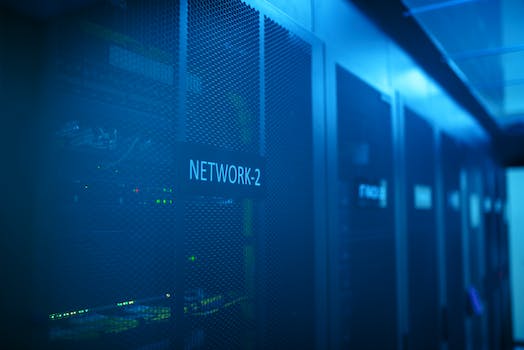-
Table of Contents
- Introduction
- Understanding the Basics of Web Hosting Security: What You Need to Know
- Implementing Firewall Protection for Your Web Hosting Environment
- Securing Your Web Hosting Environment with SSL/TLS Encryption
- Best Practices for Securing Your Web Hosting Server
- How to Monitor and Respond to Security Threats in Your Web Hosting Environment
- Conclusion
“Secure Your Web Hosting Environment with Essential Security Measures – Protect Your Data and Your Business.”
Introduction
As the internet continues to evolve, so does the need for secure web hosting environments. With the increasing number of cyber threats, it is essential to ensure that your web hosting environment is secure. This article will provide an overview of essential security measures for your web hosting environment. We will discuss the importance of security, the different types of security measures, and how to implement them. By following these steps, you can ensure that your web hosting environment is secure and protected from malicious attacks.
Understanding the Basics of Web Hosting Security: What You Need to Know

When it comes to web hosting security, it’s important to understand the basics. With the right knowledge, you can ensure that your website is secure and protected from malicious attacks. Here’s what you need to know about web hosting security.
1. Choose a Secure Web Host
The first step to ensuring your website is secure is to choose a secure web host. Look for a web host that offers secure hosting services, such as SSL encryption, secure FTP, and malware scanning. Additionally, make sure the web host has a good reputation and is reliable.
2. Use Strong Passwords
Using strong passwords is essential for protecting your website. Make sure to use a combination of upper and lowercase letters, numbers, and special characters. Additionally, avoid using the same password for multiple accounts.
3. Keep Your Software Up to Date
It’s important to keep your software up to date. This includes the operating system, web server, and any other software you use. Outdated software can be vulnerable to security threats, so make sure to keep everything up to date.
4. Monitor Your Website
Monitoring your website is essential for keeping it secure. Make sure to monitor your website for any suspicious activity, such as unauthorized logins or changes to your website’s content. Additionally, use a web application firewall to protect your website from malicious attacks.
5. Backup Your Website
Backing up your website is essential for protecting your data. Make sure to regularly backup your website so that you can restore it in the event of a security breach.
By understanding the basics of web hosting security, you can ensure that your website is secure and protected from malicious attacks. Make sure to choose a secure web host, use strong passwords, keep your software up to date, monitor your website, and backup your website regularly. With the right knowledge and precautions, you can ensure that your website is secure.
Implementing Firewall Protection for Your Web Hosting Environment
As a web hosting provider, it is important to ensure that your environment is secure and protected from malicious attacks. Firewall protection is one of the most effective ways to protect your web hosting environment from malicious threats.
A firewall is a network security system that monitors and controls incoming and outgoing network traffic based on predetermined security rules. Firewalls can be either hardware- or software-based, and they are designed to protect your web hosting environment from unauthorized access, malicious attacks, and other security threats.
When implementing firewall protection for your web hosting environment, there are several steps you should take. First, you should identify the types of traffic that you want to allow or block. This includes both incoming and outgoing traffic. You should also create rules for each type of traffic, such as allowing certain types of traffic and blocking others.
Next, you should configure your firewall to block any traffic that does not meet the rules you have set. This includes blocking any traffic from known malicious sources, such as IP addresses or domains. You should also configure your firewall to detect and block any suspicious activity, such as port scans or brute force attacks.
Finally, you should regularly monitor your firewall to ensure that it is working properly and that all of the rules you have set are being enforced. You should also update your firewall regularly to ensure that it is up-to-date with the latest security patches and updates.
By implementing firewall protection for your web hosting environment, you can ensure that your environment is secure and protected from malicious threats. This will help to keep your customers’ data safe and secure, and it will also help to protect your business from any potential security breaches.
Securing Your Web Hosting Environment with SSL/TLS Encryption
As the internet continues to evolve, so does the need for secure web hosting environments. With the rise of cybercrime, it is essential that businesses take the necessary steps to protect their websites and data from malicious attacks. One of the most effective ways to do this is by implementing SSL/TLS encryption.
SSL/TLS encryption is a form of security technology that encrypts data sent between a web server and a web browser. This encryption ensures that any data sent between the two is secure and cannot be intercepted by malicious actors. It also helps to authenticate the identity of the website, ensuring that visitors are connecting to the correct website and not a malicious imposter.
When it comes to web hosting, SSL/TLS encryption is essential for protecting your website and data. It helps to ensure that any data sent between your web server and your visitors is secure and cannot be intercepted. It also helps to authenticate the identity of your website, ensuring that visitors are connecting to the correct website and not a malicious imposter.
SSL/TLS encryption is relatively easy to implement and can be done through your web hosting provider. Most web hosting providers offer SSL/TLS encryption as part of their hosting packages, so it is important to check with your provider to see what options are available.
Once you have implemented SSL/TLS encryption, it is important to keep it up to date. SSL/TLS encryption is constantly evolving, so it is important to ensure that your encryption is up to date and secure. It is also important to regularly monitor your website for any security vulnerabilities and take steps to address them.
By implementing SSL/TLS encryption, you can ensure that your web hosting environment is secure and protected from malicious attacks. This will help to protect your website and data, as well as the data of your visitors. It is an essential step in keeping your website and data secure.
Best Practices for Securing Your Web Hosting Server
As a web hosting provider, it is your responsibility to ensure that your server is secure and protected from malicious attacks. Here are some best practices for securing your web hosting server:
1. Use a Firewall: A firewall is a network security system that monitors and controls incoming and outgoing network traffic based on predetermined security rules. It is essential to have a firewall in place to protect your server from malicious attacks.
2. Keep Software Up-to-Date: It is important to keep all software on your server up-to-date. Outdated software can be vulnerable to security threats, so make sure to regularly update your software to the latest version.
3. Use Strong Passwords: Weak passwords can be easily guessed or cracked, so it is important to use strong passwords for all accounts on your server. Make sure to use a combination of upper and lowercase letters, numbers, and special characters.
4. Monitor Server Activity: Regularly monitor your server for any suspicious activity. This will help you detect any potential security threats and take appropriate action.
5. Use Secure Protocols: Make sure to use secure protocols such as SSL/TLS for all communication between your server and clients. This will help protect sensitive data from being intercepted by malicious actors.
6. Implement Access Controls: Implement access controls to restrict access to your server. This will help prevent unauthorized users from accessing your server and potentially compromising its security.
By following these best practices, you can ensure that your web hosting server is secure and protected from malicious attacks.
How to Monitor and Respond to Security Threats in Your Web Hosting Environment
As a web hosting provider, it is essential to ensure that your environment is secure and free from any potential security threats. To do this, you must monitor and respond to any security threats that may arise. Here are some tips on how to monitor and respond to security threats in your web hosting environment.
1. Monitor Your Network: The first step in monitoring and responding to security threats is to monitor your network. This includes monitoring your network traffic, checking for any suspicious activity, and keeping an eye out for any malicious software or malware. You should also monitor your server logs for any suspicious activity.
2. Use Security Software: To protect your web hosting environment, you should use security software such as firewalls, antivirus programs, and intrusion detection systems. These tools can help detect and prevent any potential security threats.
3. Implement Security Policies: It is important to have a set of security policies in place to ensure that your web hosting environment is secure. These policies should include guidelines for user access, data protection, and security measures.
4. Monitor User Activity: You should also monitor user activity on your web hosting environment. This includes monitoring user logins, file transfers, and any other activities that could potentially be a security threat.
5. Respond to Security Threats: Once you have identified a security threat, it is important to respond quickly and appropriately. This includes taking steps to mitigate the threat, such as disabling user accounts, blocking IP addresses, and removing malicious software.
By following these tips, you can ensure that your web hosting environment is secure and free from any potential security threats. By monitoring and responding to security threats, you can protect your customers and your business.
Conclusion
In conclusion, essential security measures for your web hosting environment are essential for protecting your website and data from malicious attacks. Implementing a secure web hosting environment requires a combination of technical and administrative measures, such as firewalls, antivirus software, secure passwords, and regular security audits. Additionally, it is important to stay up-to-date on the latest security threats and trends, and to ensure that your web hosting provider is taking the necessary steps to protect your website and data. By taking the necessary steps to secure your web hosting environment, you can ensure that your website and data remain safe and secure.

![When to visit [destination]: A month-by-month guide When to visit [destination]: A month-by-month guide](https://nishankhatri.xyz/wp-content/uploads/2023/03/79aa6a5be11f2d4f5af462bf3e6addb2-300x200.jpeg)













